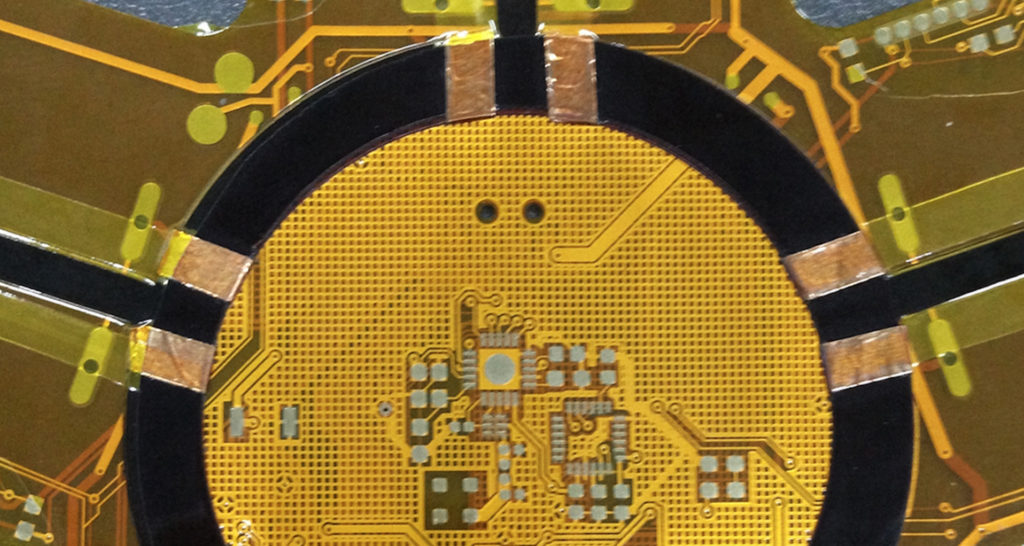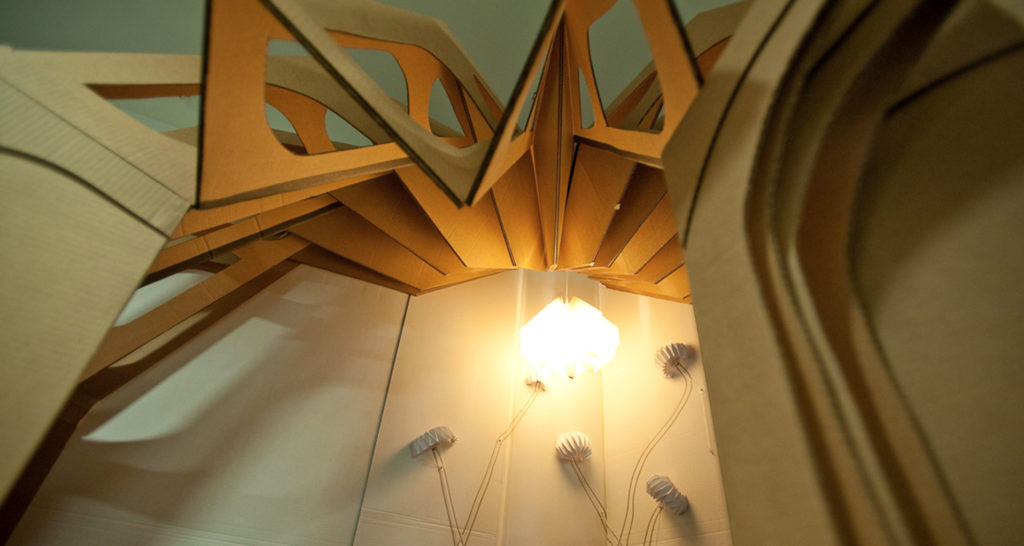Origami Robotics
Origami Robotics
Experiments in lightweight and versatile paper actuation using muscle wire, a shape memory alloy (SMA) that contracts when heated with electric current.
By sewing or weaving the SMA through paper, the sheet is able to self-fold or self-curl without the need for bulky motors or pumps used in traditional actuation. The versatility of paper mechanisms also allows for a wide variety of movements and applications.
2010-2012
Read More:
Self-Folding Paper
Paper Actuation Mechanisms
Flapping Cranes
Publications:
Animating Paper with Shape Memory Alloys [PDF]
Qi, Jie and Buechley, Leah. In Proceedings of the SIGCHI Conference on Human Factors in Computing Systems (CHI ’12). ACM, New York, NY, USA, 749–752.
Related External Links:
MAKE: Guide to Working with SMAs
Flapping Origami Crane Tutorial
Self-Folding Paper
I/O paper is a pair of connected origami square that fold into a blintz. The controller paper in red senses folding using conductive yarn sensors and output paper in white, mirrors the motion using SMA sewn to each fold.

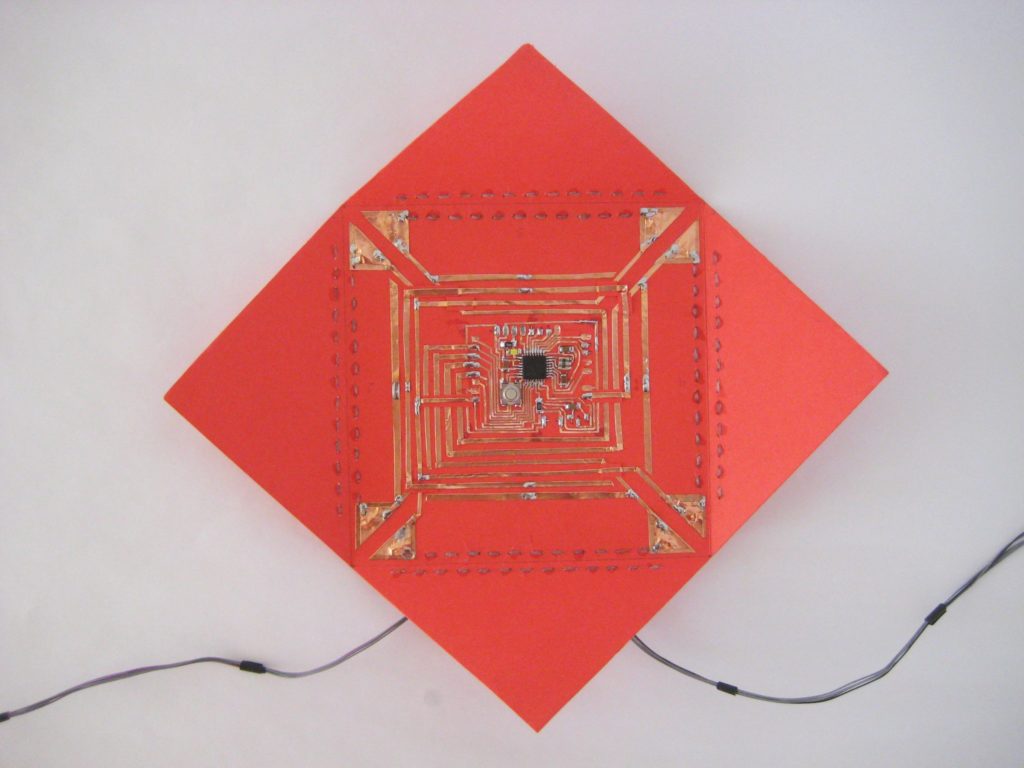
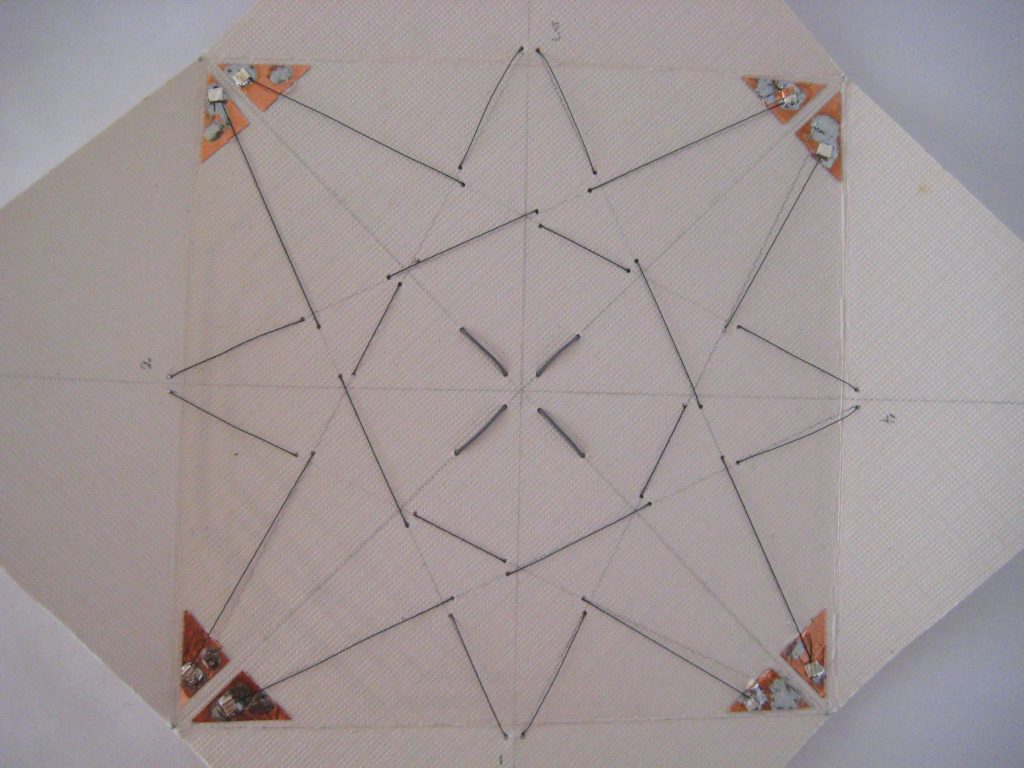
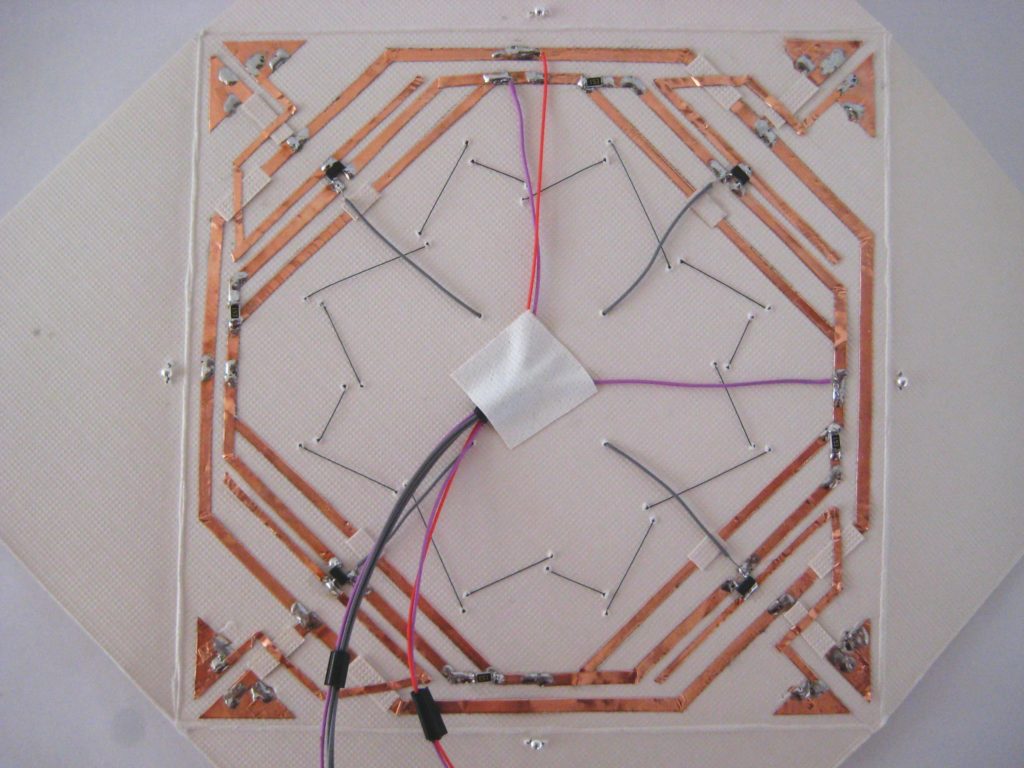
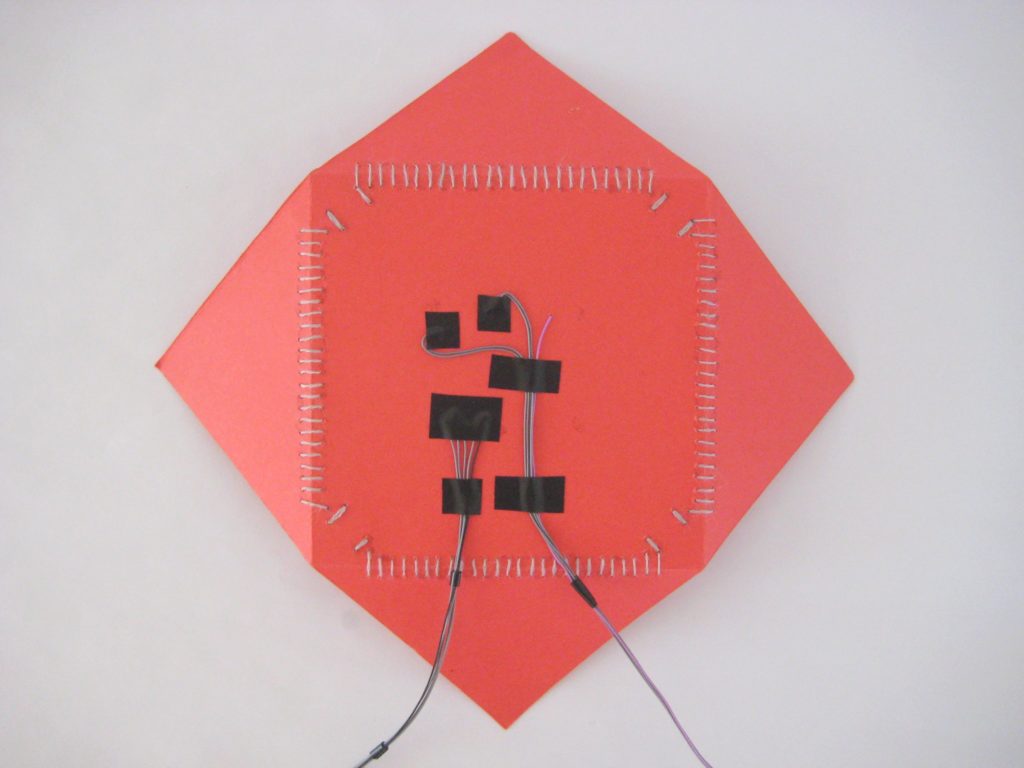


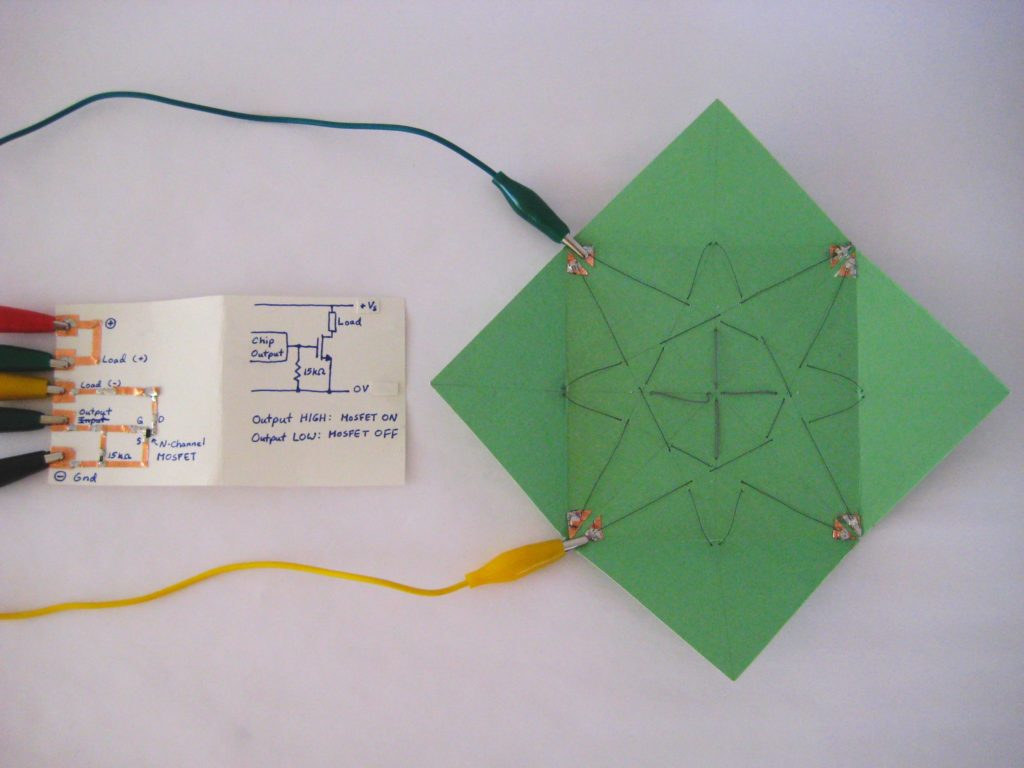
Paper Actuation Mechanisms
For those interested in trying out these mechanisms, please check out my MAKE: Guide to working with Shape Memory Alloy.
Folding
Looping the SMA above the crease of the fold and anchoring the two ends of wire below the crease will create a hinge that folds when pulled by the shrinking SMA wire.
Curling
By sewing the SMA along the surface of the paper, creating a tube the wire can slip through, when the SMA contracts, the paper must curl to match the shortened wire.
Parallelogram Lift
Attaching the self-folding mechanism to an origami parallelogram creates a mechanism for lifting surfaces.
Clamshell/Oricep
A clamshell fold, also known as an “oricep,” allows for a composite folding motion perpendicular to the original actuation.
Flapping Cranes
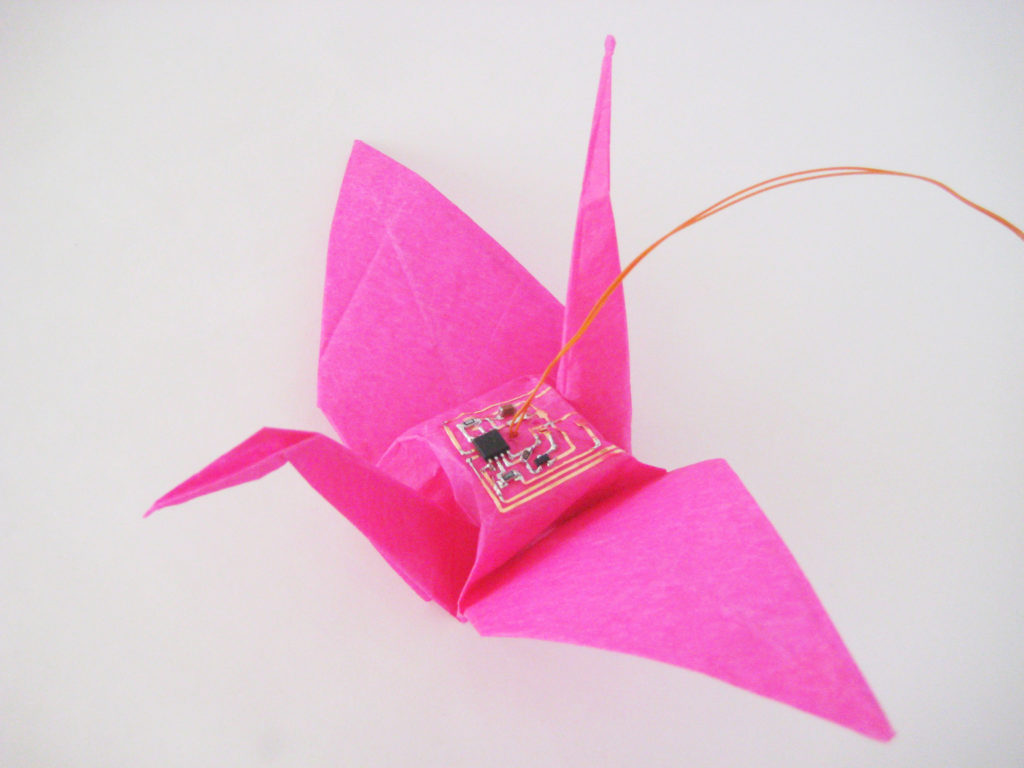

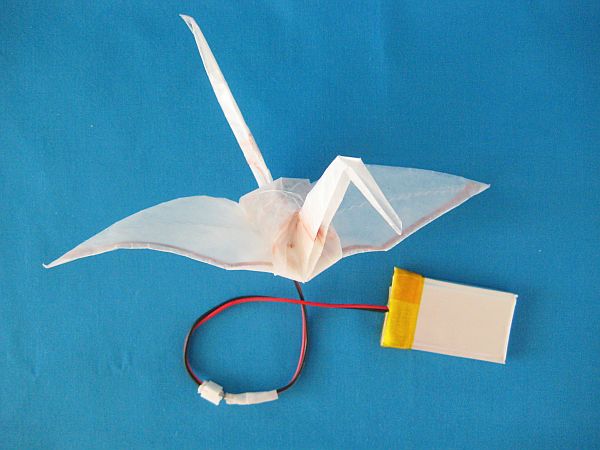
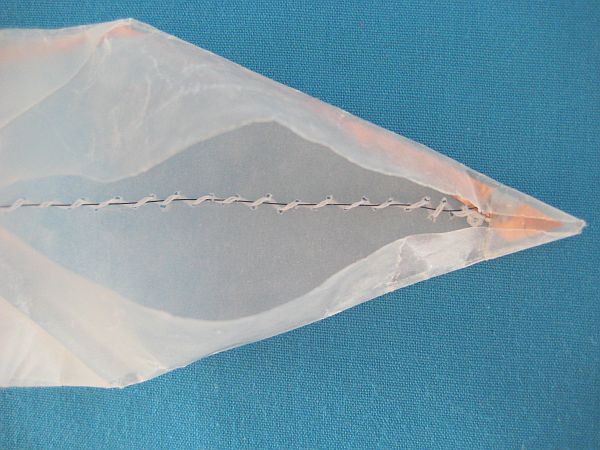
Want to try making your own flapping origami crane with shape memory alloy? Try my tutorial here.

